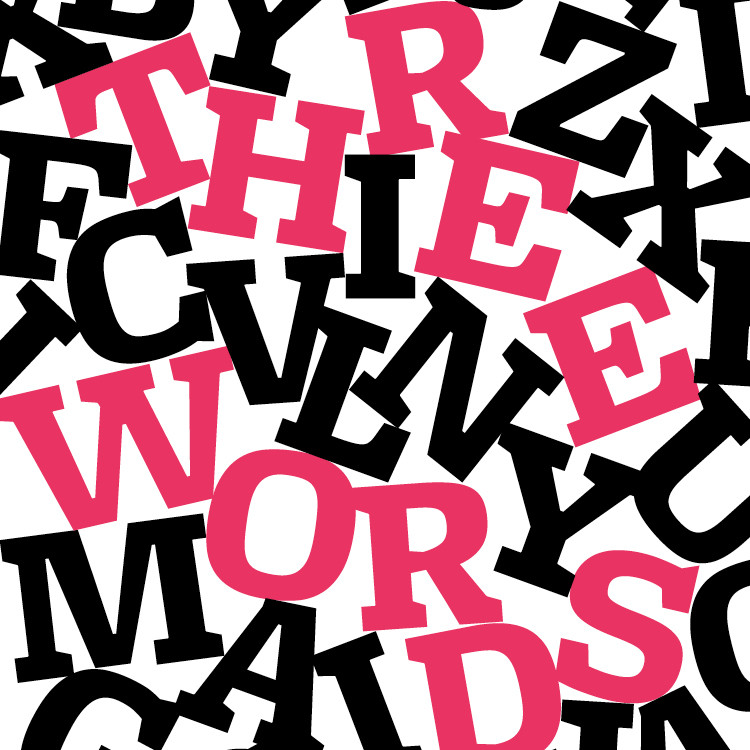
On menus, cocktails are so often described by three words. Ellen Manning says you have to choose them wisely.
There’s something about the number three. It forms the basis for so many things – the Holy Trinity, a perfect number for the Greeks, often considered lucky in China and captured by the Romans in the phrase ‘omne trium perfectum’ – the idea that everything that comes in threes is perfect. Somehow, we just can’t help but be drawn to threes – and nowhere is that idea more clear than in language. Its use in speeches, adverts and messaging is a well-known persuader. Think Shakespeare’s Julius Caesar’s ‘Friends, Romans, countrymen’; Tony Blair’s ‘Education, Education, Education’, and the government’s often-peddled three-word slogans to promote policies.
And so to menus. How often have we seen drinks reduced to a trio of words? They’re the headline to the story that is the drink. The summary and the temptation wrapped up in one. The way a bar gives enough of a clue as to their flavour and the experience of drinking them without giving too much away. But much like complex dishes in restaurants, most decent drinks’ ingredients lists are longer than a mere three ingredients – and more complex. ‘Strawberry’ might be the starting point for a flavour created through time, love and complex processes. So how do those writing carefully crafted menus decide which three words to use? Do they focus on style, ingredients, flavours, even colour and feel? By listing the three most important elements of a drink, what happens when the person tasting it can’t find them? Do three words risk alienating as much as enticing?
Ask Tommy Matthews to look in his black book of ideas and you’ll find plenty of threes. Sometimes they’re focused on flavour. Other times major ingredients. There’s no formula – it’s about picking out three elements that tell the drink’s story. A starting point for most menus are the main players – alcohol or flavour. At Matthews’ Passing Fancies, you’ll find certain spirits get a mention in those three words. Then there are the most obvious flavours – raspberry, white chocolate, or unique notes of palo santo.
At The Savoy’s American Bar, the three words on the menu don’t come in lieu of documenting ingredients, but as well as. The Fine & Fancy may have a list of elements including whisky, Suze Gentian and Nyetimber, but the three words it’s given are the drink’s overall impact: ‘Herbaceous – Punchy – Bubbly’.
Cultural differences
Possibilities for three-word summaries don’t stop there. The role of colour and appearance when it comes to drinks isn’t a new concept. Oxford University professor and gastrophysicist Professor Charles Spence has discussed how a drink’s colour or the vessel it’s served in can impact us. In his own masterclasses, Dani Umoette, bartender and Tequila Herradura brand ambassador, explores the idea of whether we can ‘taste’ colour – or at least use colours to describe what we’re drinking. Red is spicy or hot, while blue is cool, minty, fresh. Of course, cultural differences mean these aren’t set in stone but the relevance of colour and appearance means one of those valuable three words could easily focus on how a drink looks as much as how it tastes.
Taste, colour, flavour are obvious choices when it comes to summarising a drink in three words. But ask Matthews about the third descriptor of Passing Fancies’ White Velvet – Champagne, Stella, Trust – and he’ll laugh out loud. Because trust isn’t about how the drink tastes, or looks, or smells. It’s about what he’s asking of you when you order it. “People ask what it means – it means ‘trust us’. It’s conceptual,” he says. With that, he perhaps hits on the head why three words tend to work with drinks. They’ll never be enough
to sum up how a great cocktail tastes and what it does to you. Umoette agrees, saying a simple three words – including just a colour or an adjective – can only ever be a starting point for a conversation between bartender and bar-attender. “If you just put a colour on the menu without saying anything, that will generate interest - but also questions.” No bad thing, in his view, as part of a journey to drinkers having a ‘comprehensive, holistic, 360° experience’
in the same way you would at a restaurant. And perhaps that’s what it’s all about – a conversation starter, in the same way a trailer never tells the whole story of a movie, or the blurb on the back of a book gives away every detail. Three words is just the start of the journey – and we’re here for them.


